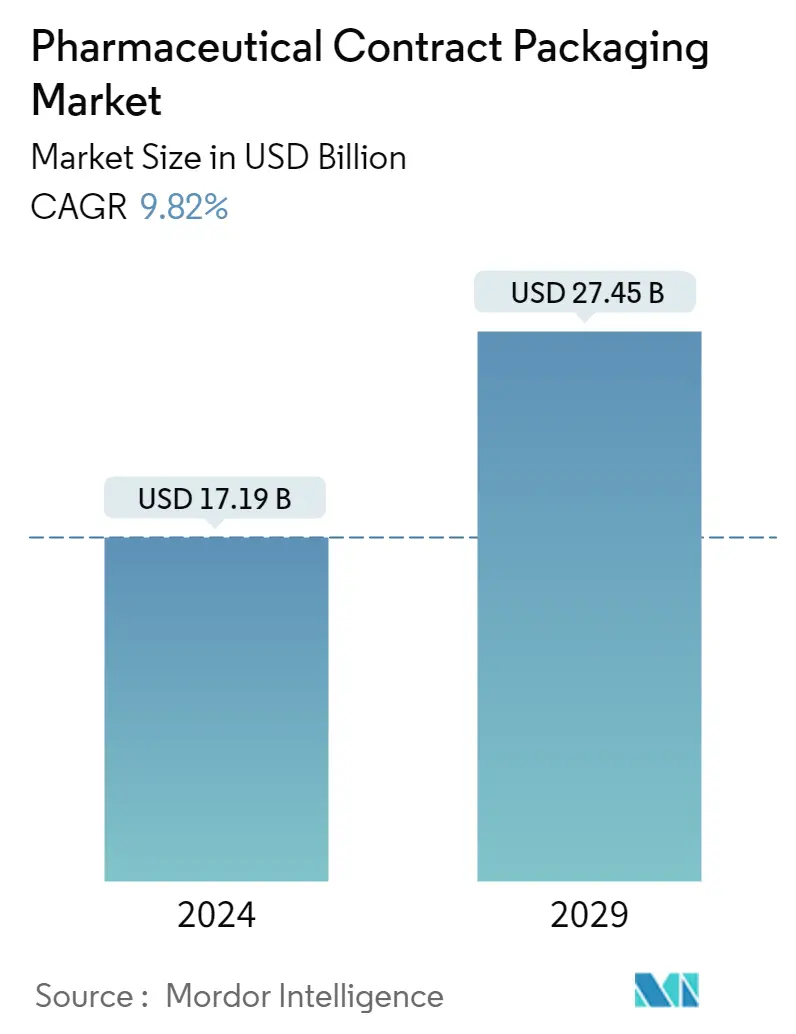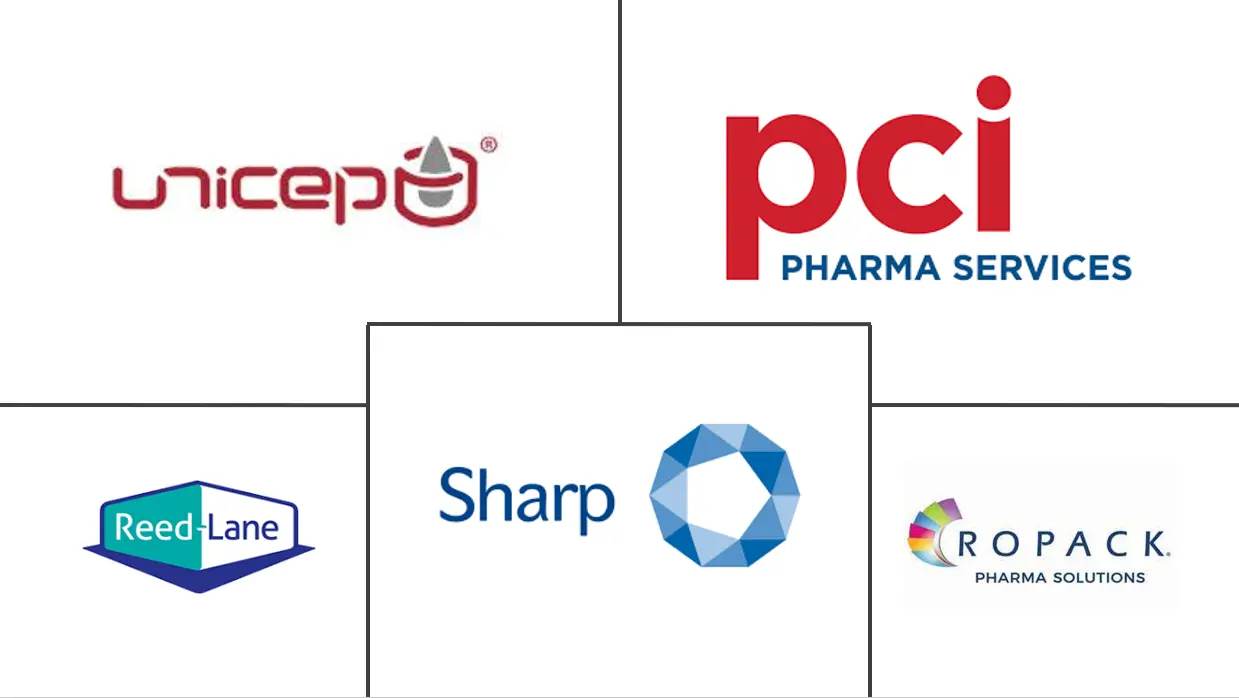Market Size of Pharmaceutical Contract Packaging Industry

| Study Period | 2019 - 2029 |
| Market Size (2024) | USD 17.19 Billion |
| Market Size (2029) | USD 27.45 Billion |
| CAGR (2024 - 2029) | 9.82 % |
| Fastest Growing Market | Asia-Pacific |
| Largest Market | North America |
Major Players
*Disclaimer: Major Players sorted in no particular order |
Need a report that reflects how COVID-19 has impacted this market and its growth?
Pharmaceutical Contract Packaging Market Analysis
The Pharmaceutical Contract Packaging Market size is estimated at USD 17.19 billion in 2024, and is expected to reach USD 27.45 billion by 2029, growing at a CAGR of 9.82% during the forecast period (2024-2029).
With COVID-19 influencing a significant spike in demand for vials, medicines, and other drugs, manufacturers in the industry scrambled their resources and pushed for faster manufacturing and packaging processes. During the initial months of the pandemic, there was a significant shortage of materials for both CMOs and CPOs in the market; owing to supply chain issues faced in the Asia-Pacific region, which commands a prominent position when it comes to pharmaceutical raw materials as well as packaging industry raw materials which resulted in slower manufacturing and packaging.
- The global pharmaceutical industry is growing exponentially, driven by global economic growth, a growing and aging population, and new product launches. According to IQVIA, the revenue of the global pharmaceutical market in 2020 stood at USD 1,265.2 billion and growing at a steady pace. As many pharmaceutical vendors recognized that profits could be increased by outsourcing the commercial and clinical packaging to a pharmaceutical contractor, the contract packaging in the industry is expanding.
- Over the past few years, there's been a significant rise in the number of new drugs approved by the US FDA. For instance, the total number of novel drugs approved by CDER in 2020 stood at 53, which was 48 during the previous year, according to Food and Drug Administration (Center for Drug Evaluation and Research (CDER)). Also, the generic drug program approved or tentatively approved 948 generic drug applications during the year. The increase in the number of new drugs approved by the FDA has positively impacted the global pharmaceutical contract packaging market.
- Further, injectables are expected to witness increased market share outpacing other routes of administration such as oral over the coming years; owing to this, the demand for injectable solutions is likely to increase in contract packaging, and significant pharmaceutical vendors are expected to expand their capabilities in this space.
- For instance, in January 2021, Novartis made a strategic investment in drug delivery company Credence MedSystems; the investment is expected to help advance the development and scaling of Credence's drug delivery systems, with an initial focus on the Credence Companion Safety Syringe System.
- Moreover, the demand for outsourcing bottling services is expected to be stable in the larger volume market. The need for blister packaging and bottling services is expected to be driven by the maintenance drugs and demand for efficient go-to-market packaging options for new products, focusing on 30-60-90 day presentations for maintenance drugs.
- Further, the EU regulations mandate all pharmaceutical manufacturers to comply with the EU Good Manufacturing Practices (GMP) if they want to supply products to the EU. Then manufacturers and importers must be authorized and registered by a competent authority from a member state. The manufacturers and importers are regularly inspected by an EU competent authority or other approved authority to check the compliance with the EU GMP. This process applies wherever the manufacturer is located. Where a particular company imports products, the importer stands responsible for ensuring compliance with the GMP. The EU legislation governing pharmaceutical products is compiled in "The Rules Governing Medicinal Products in the European Union."
